Solar eclipse of January 5, 1935
A partial solar eclipse occurred on January 5, 1935 during summer. A solar eclipse occurs when the Moon passes between Earth and the Sun, thereby totally or partly obscuring the image of the Sun for a viewer on Earth. A partial solar eclipse occurs in the polar regions of the Earth when the center of the Moon's shadow misses the Earth.
| Solar eclipse of January 5, 1935 | |
|---|---|
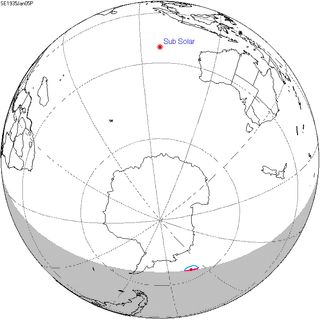 Map | |
| Type of eclipse | |
| Nature | Partial |
| Gamma | -1.5381 |
| Magnitude | 0.0013 |
| Maximum eclipse | |
| Coordinates | 64.7°S 110.2°W |
| Times (UTC) | |
| Greatest eclipse | 5:35:46 |
| References | |
| Saros | 111 (79 of 79) |
| Catalog # (SE5000) | 9363 |
Description
It was one of five eclipses that took place that year, the next one was in the Northern Hemisphere on February 3 and covered much of North America.
It was the last eclipse of solar saros 111 with the moon's penumbra touching the earth for just 10 minutes.[1] The next mini eclipse in 296 years, the last solar eclipse that was very short occurred on January 4, 1639 and had a magnitude of 0.0009 and lasted for about 7 minutes.
As is shown under 1% obscuration, the center of the Moon's shadow was missed by about 2,825 km above the area (64.7S) north of the Antarctic Circle.
The mini-eclipse took place hundreds of kilometers offshore from Antarctica in the Pacific Ocean, at the fifth minute, the greatest eclipse occurred at 5:35:45 UTC (22:45 local time) at 64.7S and 110.2 W.
As the moon moved towards the right on the Moon, in that part of Antarctica north of the South Pole at the 110th meridian west, it was seen as it was moved towards the right as the axis spun south of 66.5 S, the Antarctic Circle.
The eclipse was the shortest in the 20th century.
Related eclipses
Solar eclipses 1935–1938
This eclipse is a member of a semester series. An eclipse in a semester series of solar eclipses repeats approximately every 177 days and 4 hours (a semester) at alternating nodes of the Moon's orbit.[2]
| Solar eclipse series sets from 1935–1938 | ||||
|---|---|---|---|---|
| Ascending node | Descending node | |||
| 111 | January 5, 1935 Partial |
116 | June 30, 1935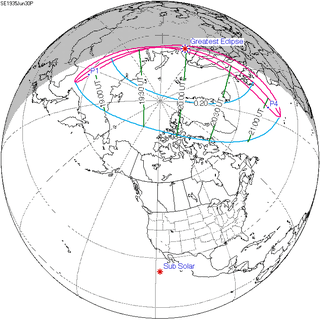 Partial | |
| 121 | December 25, 1935 Annular |
126 | June 19, 1936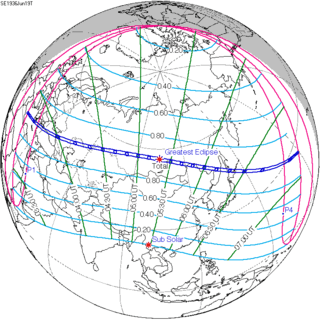 Total | |
| 131 | December 13, 1936 Annular |
136 | June 8, 1937 Total | |
| 141 | December 2, 1937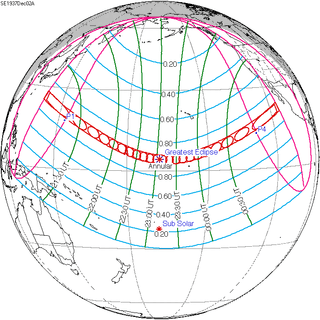 Annular |
146 | May 29, 1938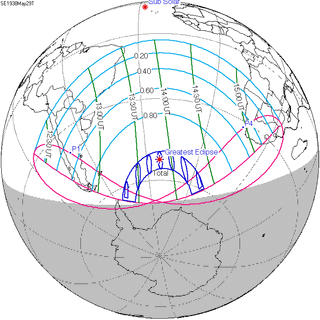 Total | |
| 151 | November 21, 1938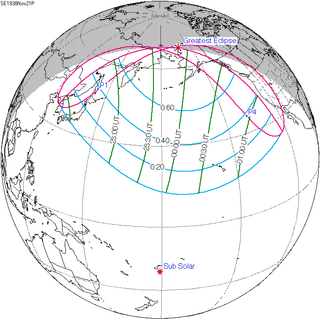 Partial | |||
Metonic series
The metonic series repeats eclipses every 19 years (6939.69 days), lasting about 5 cycles. Eclipses occur in nearly the same calendar date. In addition, the octon subseries repeats 1/5 of that or every 3.8 years (1387.94 days). All eclipses in this table occur at the Moon's ascending node.
| 22 eclipse events between January 5, 1935 and August 11, 2018 | ||||
|---|---|---|---|---|
| January 4-5 | October 23-24 | August 10-12 | May 30-31 | March 18-19 |
| 111 | 113 | 115 | 117 | 119 |
 January 5, 1935 |
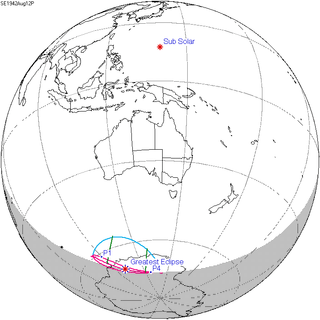 August 12, 1942 |
 May 30, 1946 |
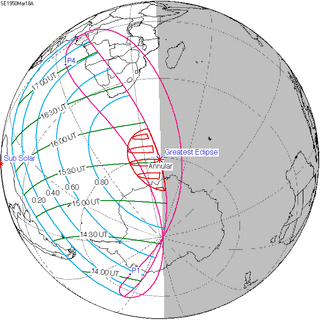 March 18, 1950 | |
| 121 | 123 | 125 | 127 | 129 |
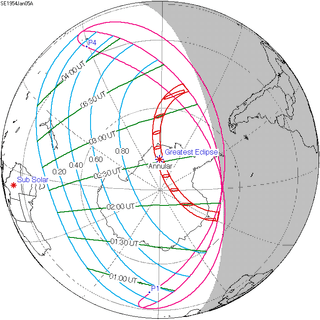 January 5, 1954 |
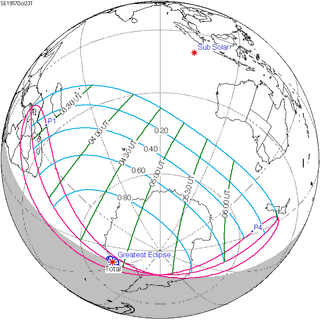 October 23, 1957 |
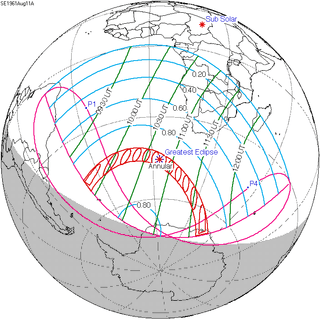 August 11, 1961 |
 May 30, 1965 |
 March 18, 1969 |
| 131 | 133 | 135 | 137 | 139 |
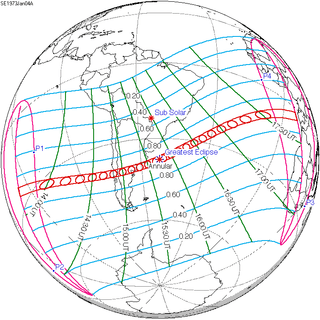 January 4, 1973 |
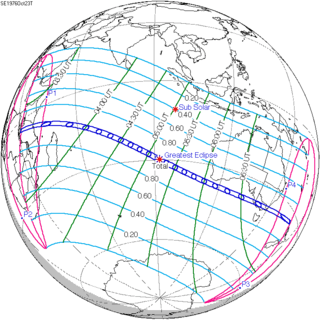 October 23, 1976 |
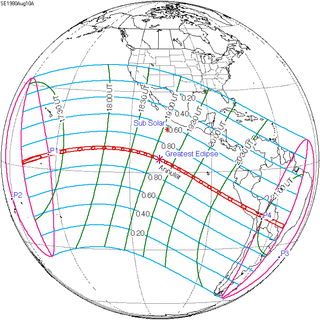 August 10, 1980 |
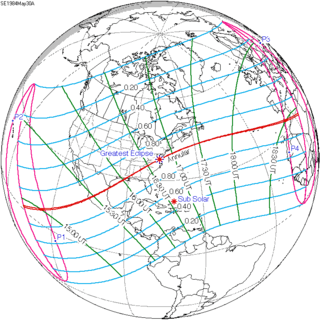 May 30, 1984 |
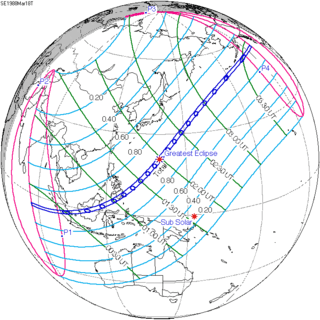 March 18, 1988 |
| 141 | 143 | 145 | 147 | 149 |
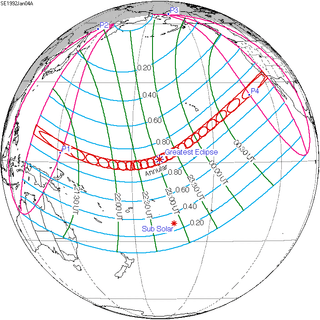 January 4, 1992 |
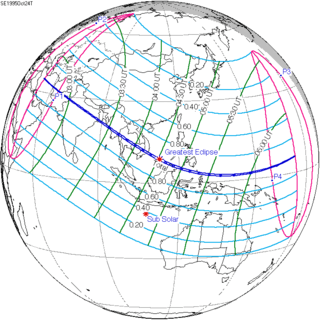 October 24, 1995 |
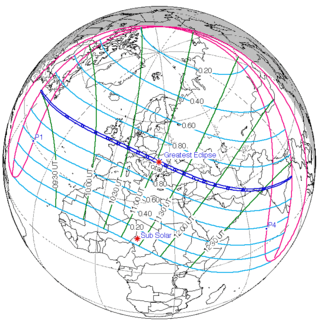 August 11, 1999 |
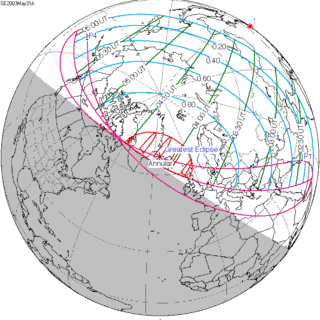 May 31, 2003 |
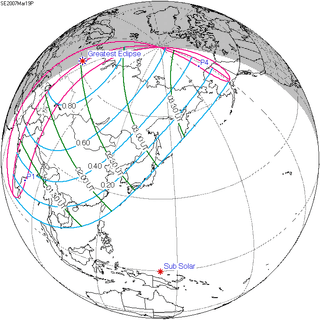 March 19, 2007 |
| 151 | 153 | 155 | 157 | 159 |
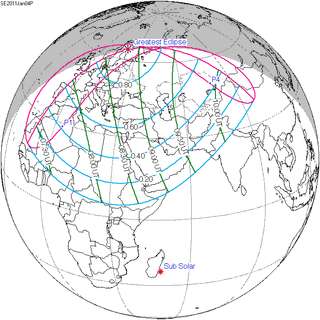 January 4, 2011 |
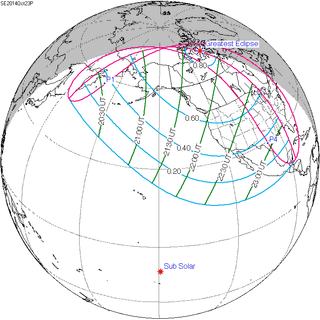 October 23, 2014 |
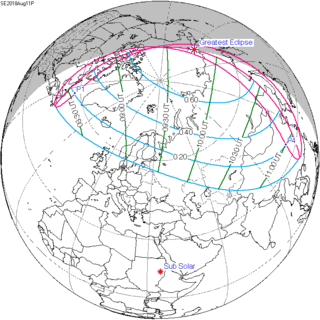 August 11, 2018 |
||
References
- http://eclipse.gsfc.nasa.gov/SEplot/SEplot1901/SE1935Jan05P.GIF
- van Gent, R.H. "Solar- and Lunar-Eclipse Predictions from Antiquity to the Present". A Catalogue of Eclipse Cycles. Utrecht University. Retrieved 6 October 2018.
.jpg)
